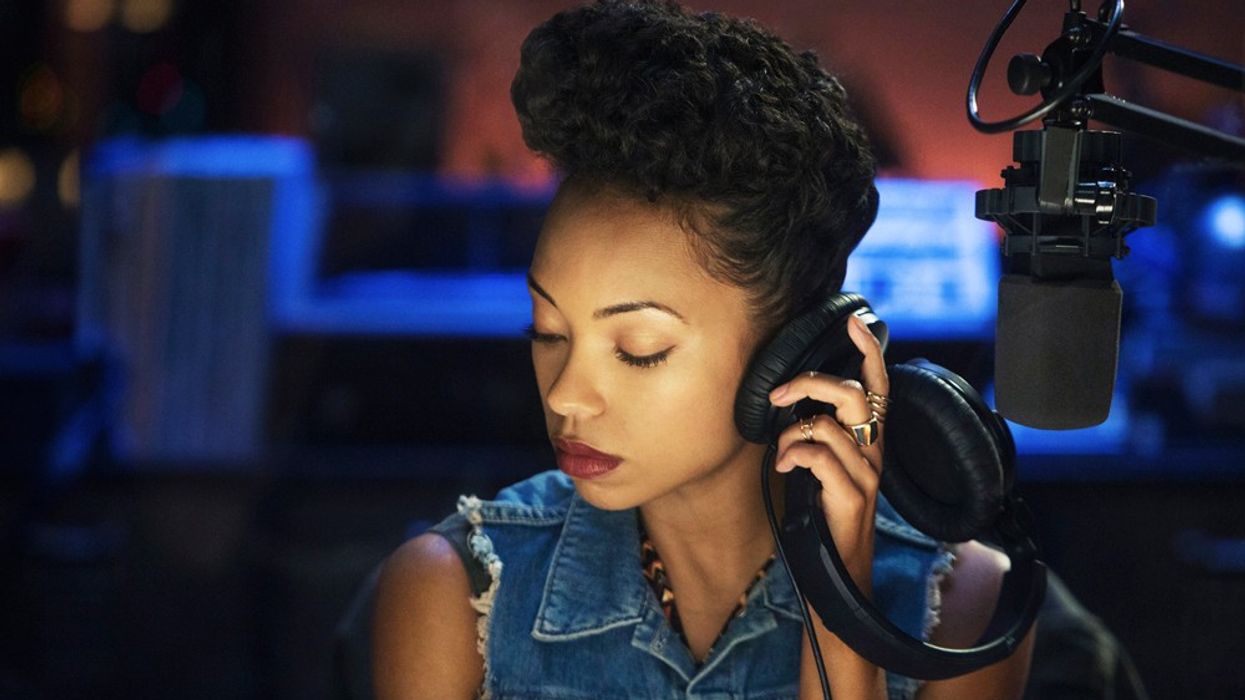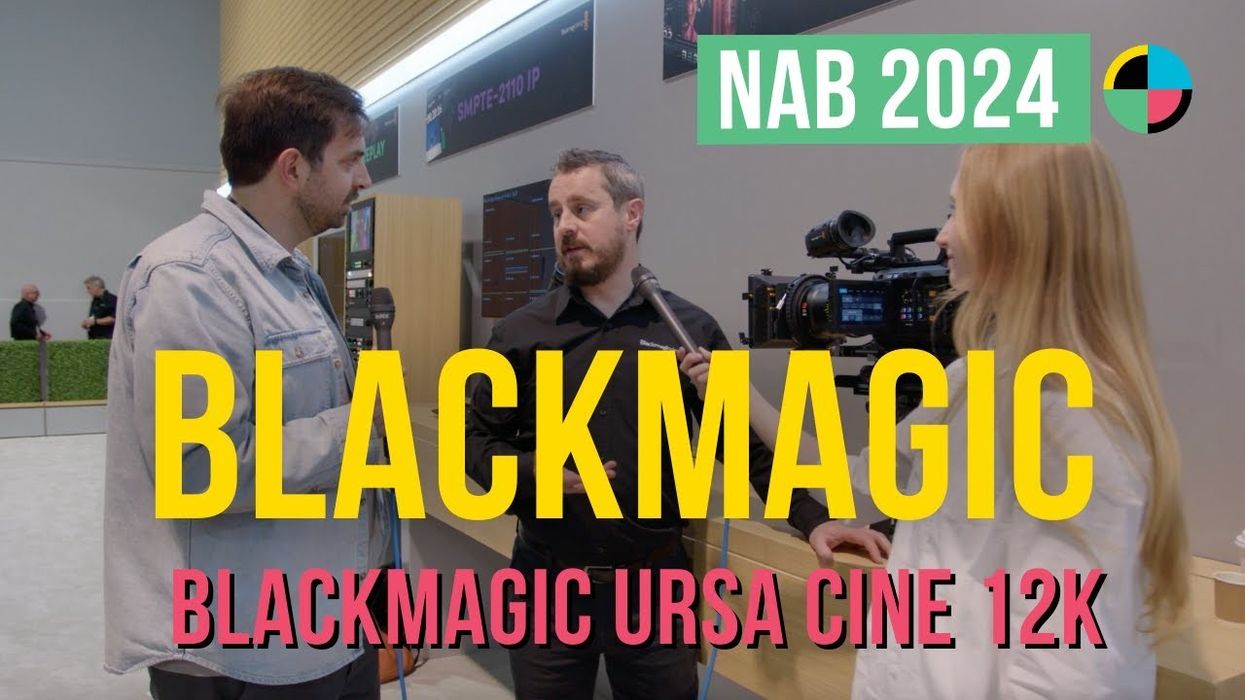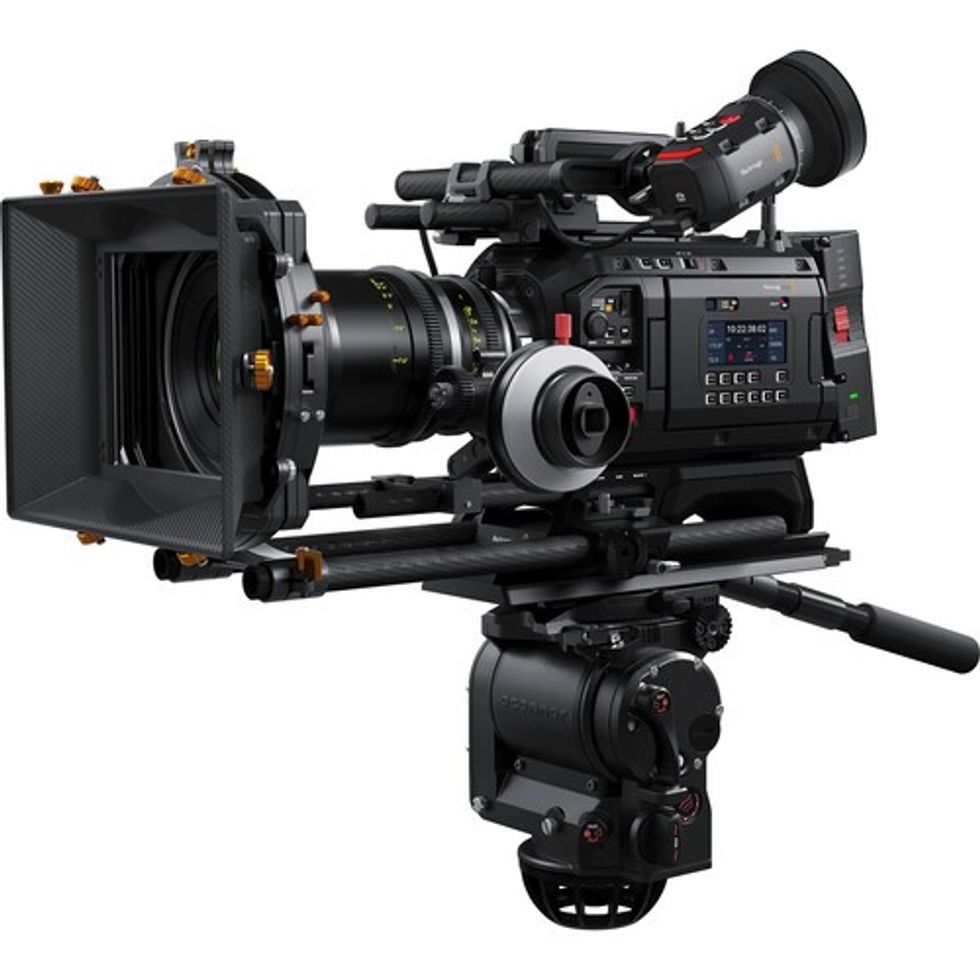How 'Dear White People' Cinematographer Shot the Netflix Series with 'Big Ambitions'
For Netflix's Dear White People, Jeffrey Waldron, inspired by a myriad of references, created a distinct visual palette using RED cinema cameras.

Binge-worthy series are hitting Netflix almost daily as the streaming services plans to shell out over six billion dollars to produce original content this year alone. Dear White People caught the attention of Twitter after its first trailer dropped and for good reason. The show, helmed by Justin Simien, takes a satirical look at students of color navigating a "post-racial" America while attending an Ivy League university—tackling topics on social injustice, cultural bias and political correctness in the millennial age as its characters search for an identity.
If you're familiar with the Simien's 2014 film of the same name, the series picks up where it left off with Simien directing its first two episodes. The collaboration between the director and cinematographer Jeffrey Waldron led to visuals rich in nuanced detail, layered with complexity, while cinematically adding ocular flavor to storylines. Waldron, who also worked on Brockmire for IFC, sat down with No Film School to share his knowledge about the series' workflow.
No Film School: It looks like this is your first project with creator/director Justin Simien.
Jeffrey Waldron: Yes. Dear White People was my first collaboration with him. Justin is a total filmmaker. He’s always thinking in terms of music and images, a whole palette of inspirational references to tell these stories.
NFS: What got you two on the same page?
Waldron: I enjoyed his visual style of filmmaking and we connected pretty instantly on what references the series would draw from and what its compositional language would be. We nerded out hard on the films of everyone from Ingmar Bergman to Fritz Lang to Spike Lee.
NFS: That’s funny. Did those discussions start to churn the visual palette for Dear White People?
Waldron: Definitely. I was able to distill much of our early conversations into an ornately detailed document with drawings and frame references. On a show that has a new director every week, it’s the cinematographer’s responsibility to maintain the series’ tonal and visual continuity while accommodating each filmmaker’s unique vision. By building and sharing this book, actually more like a graphic novel inspired by those conversations Justin and I had in pre-production, I was able to develop creative shorthand with new directors as well as my team of gifted camera operators and lighting technicians.

Waldron: There were a lot of film and filmmaker references at play, but each was carefully curated and designed to flow pretty seamlessly within the show’s overall look and language which was heavily influenced by Ivy League architecture, photography and style references. From there, an individual sequence might pay homage to anything from DePalma’s Dressed to Kill to Do the Right Thing.
"As our conversations progressed, we found ourselves referencing [the original film] less and less, as the emphasis for the show grew toward its own ambitions and bigger, broader goals."
NFS: That’s really cool. Did you talk about the original source material or watch the film the series is based on?
Waldron: In early creative meetings, I often discussed the film with Justin, specifically the things I loved about Topher Osborn’s photography and lighting and Justin’s unconventional coverage. But as our conversations progressed, we found ourselves referencing it less and less, as the emphasis for the show grew toward its own ambitions and bigger, broader goals.
NFS: What type of cinematic tone in terms of composition did you want to create for the show?
Waldron: The amazing sets, designed by production designer Greg Grande, lent themselves beautifully to our goal of using unusual framing to visually contextualize our characters within the Ivy League world of Winchester University. “Reach for architecture!” was a mantra between the operators and me—short-siding characters or going for enormous headroom to include a classic arch or chandelier or window.
NFS: Love it. It’s a different reason but the style reminds me of what Tod Campbell is doing in Mr. Robot. Was that something you considered?
Waldron: It’s amazing, the work of Tod Campbell and the creatives on Mr. Robot showed up in creative discussions for all three of the shows I shot last year. In all instances, we never ultimately aimed to emulate any of the show’s style, but I do think that show opened up a lot of conversations about coverage and framing that standard TV had taken for granted, or considered “off-limits.” I think unconventional television like that is inspiring all of us to think more deeply about framing and meaning.

Waldron: We shot the show using RED’s Weapon camera systems and used Zeiss Master Prime lenses and Angenieux Optimo zooms. I think the sharpness, speed and shallowness of the Master Prime helps transform stage backgrounds into lush, abstract, very real-feeling places. While it’s taxing on focus-pullers, having to be very specific about focus for each shot, it’s just another tool in the arsenal for creating meaning and worth the occasional buzz.
NFS: On a technical level, what was your workflow for Netflix?
Waldron: We shot the show in 5K RAW for a final 4K output, occasionally capturing in 6K if the additional oversampling was useful for a visual effect, frame overlay, or planned digital zoom.
"With such a specific aesthetic ambition, the need to be able to dig into shadows and the wide array of skin tones, lighting the show was a big undertaking."
NFS: The series has a very pleasing look: contrasted tones, rich blacks, warmth. What was your lighting approach?
Waldron: With such a specific aesthetic ambition, the need to be able to dig into shadows and the wide array of skin tones, lighting the show was a big undertaking. We used a wide variety of tools on the stage—soft boxes built from Quasar tubes over muslin ceilings to provide dimmable ceiling ambience, coupled with a variety of LED sources of all shapes and sizes, plus large tungsten sources to provide convincing and robust “sunlight” through the many large windows. We were often lighting huge wides featuring dozens of actors and the careful interplay of all of these units was hard work. For this style, this camera, these actors, there was no easy way to do it!

Waldron: We didn’t create any custom LUTs for the show. We used RED’s Dragon Color and RED Gamma presets to monitor a ‘default’ image. Exposing this way ensured a very healthy RAW with plenty of information in the shadows and highlights. To avoid noise in our skin tones, this meant lighting a bit more in the shadows versus creating a LUT to lift them, but this gave us way more flexibility in post. My thinking was, “If I can make Rec. 709 look good, we can do anything we want in post.”
NFS: Were you shooting multiple cameras for the show?
Waldron: We were almost always rolling two cameras, which can be a challenge on a show like this, with formal camera moves and angle-specific lighting. Both cameras were on dolly if both could be.
"Character-wise and stylistically, the show changes its point-of-view every episode by design. It’s up to us to best tell each story."
NFS: How did Justin and you block scenes? Did things happen more organically on set or was there a distinct vision going in?
Waldron: There’s going to be a give-and-take between formal lighting and camera work, and loose, natural, free blocking. It’s navigating these gray areas scene-to-scene and director-to-director that makes a show like Dear White People so fun to shoot.
In early episodes, like Justin’s first two, we’re establishing the world and language of the series and the camera is a force of nature. In those episodes, it’s often the camera that dictates the pace, commands attention and tells the story. As we progress toward the mid-point of the series, and specifically the Barry Jenkins-directed episode, the story is thrust boldly in the hands of the actors and so the camera becomes more objective and responsive to them. Character-wise and stylistically, the show changes its point-of-view every episode by design. It’s up to us to best tell each story.

Waldron: We played with depth of field in a number of ways, including as a chance to illustrate Sam’s feeling of alienation at Winchester. For instance, when she’s surrounded on campus by a slew of questions from well-meaning but aggressively curious white classmates, we chose to shoot wide open on a wide prime, exaggerating their faces and letting the background fall soft. We also adopted a shallow depth of field as a means to play up the authenticity and vastness of our stage sets, popping our characters against softened background architecture.
Justin loves the zoom lens, so racking focus or the act of zooming to steer a viewer’s attention to something important in the frame is a device so unique to cinematography among the arts. We chose to do those things when a scene called for it.
"As it evolves, digital technology just gives you more and more control, and ultimately more choices, which also means more opportunities to make bad ones."
NFS: Were there other challenges on the show?
Waldron: Routinely one of the biggest challenges was trying to light and cover scenes where there are six to ten actors—trying to retain some modicum of nuance, some shape to the light, trying to keep interesting compositions for two simultaneous cameras—and all at a television pace.
We really wanted to celebrate the array of skin tones in the show, and for a shot with nine people in it, you’re getting very specific about lighting. While a challenge, this ultimately became one of my favorite things about filming Dear White People; it’s a larger, more nuanced, and complicated canvas.
NFS: When you’re not operating the camera, what has changed the most for you as a cinematographer working on a digital set?
Waldron: As it evolves, digital technology just gives you more and more control, and ultimately more choices, which also means more opportunities to make bad ones. To be able to stare at your image on an optimized monitor as you’re composing and lighting, and make aesthetic decisions that you can assess in real-time and change, it’s too wonderful. My awe and respect for the film-based DP’s, the ones that really nailed it, in spite of what would now feel like countless obstacles, is enormous.
NFS: SXSW gave Dear White People the Audience Award for Episodic. What can we expect to see in the series?
Waldron: It’s a very funny show, and it’s a very timely show. It’s a really unique moment for people of different races, genders, and sexual orientations to ask questions and hopefully gain a richer understanding of the greater picture—maybe even laugh at ourselves in the process.

NFS: What’s your favorite spot to eat in Los Angeles?
Waldron: Little Ethiopia is always worth the trip.
NFS: A movie every cinematographer should watch?
Waldron:Inside Llewyn Davis; a unique tone among Coen Brothers films — beautiful but haunting, polished but raw. Bruno Delbonnel is amazing.
NFS: Best smart phone app you use on the job?
Waldron: Artemis — it ain’t perfect but it’s great for communication between directors and operators. We end up using it all the time.
NFS: Director you’d want to work with?
Waldron: Wes Anderson.
NFS: Better superhero: Batman or Superman?
Waldron:Burton’s Batman.
Dear White People starts streaming April 28 on Netflix.













